Chimney Cowl Fitting Cost
- The average cost to fit a chimney cowl is around £220 to £250
- The job will take approximately a day to complete
- A complete pricing breakdown which includes cost factors to consider, the types of cowl available, along with what such a task usually involves
- How long the job should approximately take and a general overview of what kind of jobs can be performed
- How to find and hire a professional chimney specialist
In the following price guide, we'll look at the prices of various chimney cowl fitting jobs and look at other relevant subjects.
Some of the additional topics we'll explore include the cost factors involved in the installation process, the various types of chimney cowls and whether you can install one DIY.
Are you ready for a quote?
If so, we have a wide range of local professional chimney specialists ready to offer you a free quote!
The average cost to fit a chimney cowl will typically be around £200 to £250.
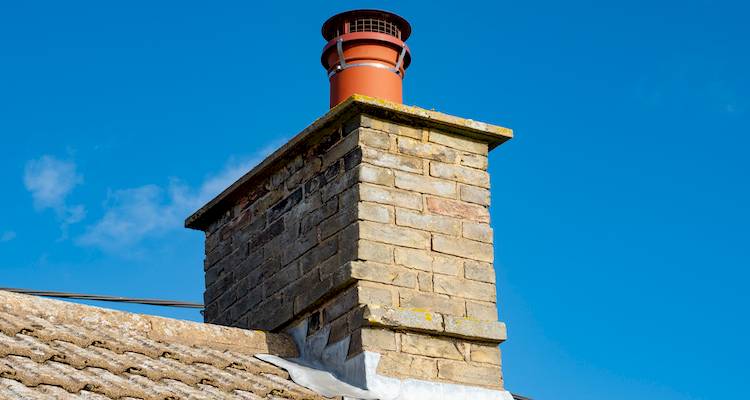
£200
Table of Contents
- How Much To Cap A Chimney?
- Supply Only Costs
- Labour Costs and Timescales
- Cost Factors of Fitting a Chimney Cowl
- Types of Chimney Cowl
- What's Involved in Fitting a Chimney Cowl?
- Can I Fit a Chimney Cowl Myself?
- Building Regulations & Planning Permission for a Chimney Cowl Installation
- Checklist: Hiring a Tradesperson to Fit a Chimney Cowl
- FAQs
How Much To Cap A Chimney?
The average cost of installing a chimney cowl without scaffolding stands at £120 to £130 for a fuel-specific cowl or around £130 to £170 in the case of a multi-purpose cowl.
If scaffolding is required, the prices rise to approximately £190 to £240 for a fuel-specific cowl or £200 to £280 to have a multi-purpose chimney cowl installed.
As you can see, these costs will depend on the type and size of the cowl being fitted and whether or not scaffolding is being used.
Beyond that, ease of access, the state of the work area and where you live in the UK can all affect the installation cost. The latter point is in relation to how labour prices differ from region to region. We’ll discuss the cost-affecting factors of this work in more detail later.
Chimney Cowl Prices
The following looks at the costs of fitting chimney cowls, both with and without scaffolding.
Without Scaffolding
The following estimates are based on including material costs and £100 labour fees.
| Job Description | Estimated Total Cost |
|---|---|
| Fuel-specific Chimney Cowl | £135 to £145 |
| Multi-specific Chimney Cowl | £145 to £190 |
With Scaffolding
The following estimates are based on including material costs and slightly higher labour fees of £150.
| Job Description | Total Cost |
|---|---|
| Fuel-specific Chimney Cowl | £190 to £240 |
| Multi-specific Chimney Cowl | £200 to £280 |
Supply Only Costs
We’ll now move to the supply costs specifically of having a chimney cowl installed. This excludes the labour costs.
The supply-only costs are particularly relevant to know if you wanted to undertake this as a DIY job (more on that later) as it explains what you’d pay if purchasing from the retailer directly.
On average, the supply costs are as follows:
- Fuel-specific cowl - £20 to £30
- Multi-purpose cowl - £30 to £70
Whether or not you need scaffolding is another supply cost to consider, which can vary depending on the amount required and whether you plan to install it yourself or hire a professional. Unless you have the right experience, it’s recommended to hire a reputable company to erect the scaffolding on your behalf.
Overall, the cost of supplies would add up to around 1/3rd of the overall price of a chimney cowl fitting if undertaken by a professional. Otherwise, they would make up the bulk of expenses if not all.
Doing it DIY may also include the cost of various tools. Unless you know exactly what’s involved, it’s best to hire a professional for both safety reasons and to get the best result.
Labour Costs and Timescales
We'll now move to the price of labour involved in having a chimney cowl installed. This, of course, excludes the supply costs and any other expenses involved in the job. The labour cost is simply the fee you pay the contractor for their time and work. It is part of the overall cost.
While the charge may land somewhere between £20 and £100 per hour, a roofer charges approximately £200 per day. Some will charge more such as if scaffolding is required.
This would relate not only to the extended time involved but as an extra labour charge for including scaffolding regardless of how much more time is added. The point is that estimating the pricing of the cost of labour for a chimney cowl fitting is not straightforward.
The average labour cost for fitting a chimney cowl:
- Fitting a cowl without scaffolding: £110 to £130
- Fitting a cowl with scaffolding: £160 to £180
It is likely to take around 30-60 minutes for the scaffolding to be set up if required. The actual removal of an old chimney cowl would take a few minutes with the actual installation of the new chimney cowl lasting around one hour.
But that's not all...
The cost of labour will depend on:
- Size of chimney cowl
- Type of chimney cowl
- Whether scaffolding is needed
- Ease of access
- State of the work area
Cost Factors of Fitting a Chimney Cowl
As touched on earlier, there are various cost-affecting factors that would shape your total bill with this work. In this section, we’ll look at them more closely.
Type and Size of Chimney Cowl
The main factors in determining the pricing of this work are the type and size of chimney cowl being installed. Fuel-specific cowls are slightly cheaper than multi-fuel cowls to purchase from a retailer. The size of the chimney cowl is also relevant to the supply costs.
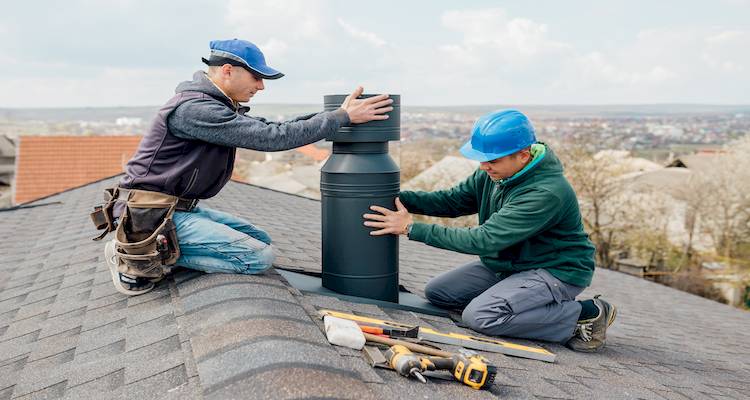
Ease of Access
How accessible your chimney and roof are in general also generally matters. The easier a professional can reach the workspace, the sooner the job will be complete. If you are being charged by the hour, this could shape your total bill.
Of course, scaffolding may be a requirement where accessibility is an issue which one way or another, is likely to increase the cost of fitting a chimney cowl. Some contractors simply charge by the job, but the job description can affect the cost of the installation work regardless of whether the time duration is being considered in itself.
Location of Property
We also discussed this briefly at the start of the article. Where you live is another cost factor of having a chimney cowl installed with contractor rates varying throughout the UK.
Contractor rates tend to be higher than the national average in the southeast (London is particularly known for having high labour rates). In contrast, regions like northern England, Scotland and Northern Ireland tend to have labour rates below the UK average.
Types of Chimney Cowl
The two primary types of chimney cowl are fuel-specific and multi-purpose chimney cowls, although below we also look at Anti-Downdraught and Rotary chimney cowls, along with the supply costs of each option.
Fuel-Specific Chimney Cowl
Some chimney cowls are designed for specific fuel-types. This makes your fuel options more limited by nature. Fuel-specific chimney cowls cost around £20 to £30. This makes them a bit cheaper than multi-purpose chimney cowls.
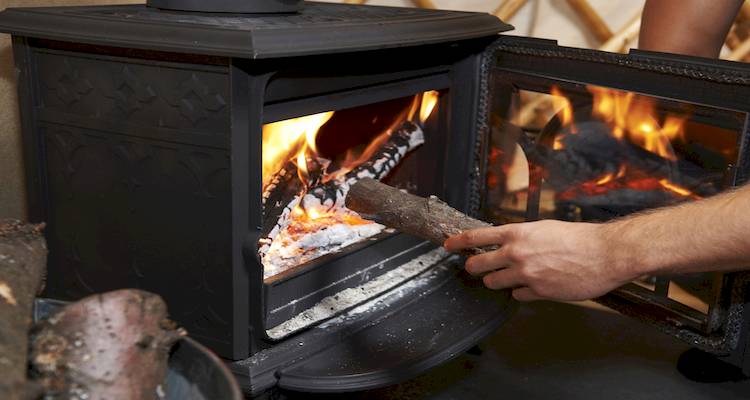
Multi-Purpose Chimney Cowl
Alternatively, you could avail of a multi-purpose chimney cowl. These chimney cowls give homeowners more options when it comes to fuel use. As a result, you wouldn’t need to replace this chimney cowl if changing fuel type whether you were to stop using your chimney entirely or choose another type of fireplace.
While a bit more expensive at around £30 to £70, it’s arguably worth spending a bit more for the benefits offered by a multi-purpose chimney cowl.
Anti-Downdraught Chimney Cowl
The purpose of these cowls is to keep downdraughts in a chimney to a minimum and potentially even eliminate them altogether. An anti-downdraught cowl may also reduce or eliminate wind sound being carried down through a chimney.
Anti-downdraught chimney cowls typically cost around £40 to £90.
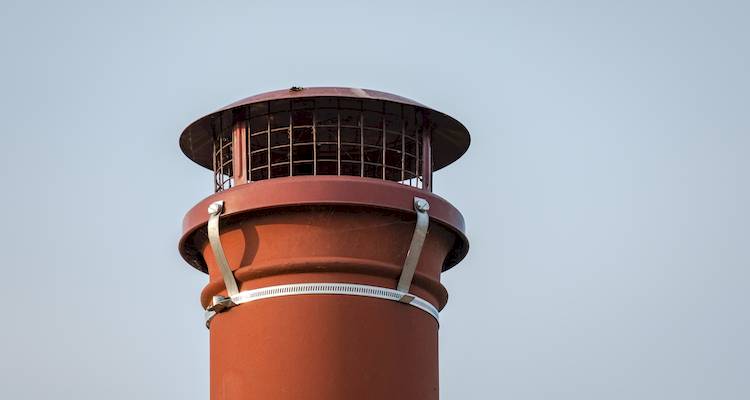
Rotary Chimney Cowl
These cowls do exactly what they say on the tin. They spin with the wind and this in turn creates a vortex which has the purpose of increasing up draughts. Spinning chimney cowls can be more effective than stationary options.
Rotary chimney cowls generally cost between £60 and £150.
What's Involved in Fitting a Chimney Cowl?
With a focus on pricing out of the way, let’s look at the steps required to install a chimney cowl. We'll also explain how the methods could vary for different reasons.
If you're wondering about undertaking this work DIY, you should also take a look at the following section 'Can I Fit a Chimney Cowl Myself?'.
- Accessing the Roof - The first aspect of the work is establishing safe access to the roof area. This may be possible with a ladder but in some cases, scaffolding will be required which should always be assembled by an experienced professional.
- Removing the Old Cowl - Before fitting a new cowl ensure the original one is removed correctly and any fixtures and fittings are safely disposed of before being replaced.
- Fitting the Chimney Cowl - Installation methods can vary, although will usually involve sliding or hooking into place and securing with screws or adhesive. Either way, always follow manufacturer instructions.
- Cleaning Up - If scaffolding has been required, this will include it being disassembled. In addition any mess created will depend on the nature of the work, as to will any waste disposal.
Can I Fit a Chimney Cowl Myself?
Thinking of taking the DIY approach? Some scenarios are more suited to fitting a chimney cowl by yourself than others.
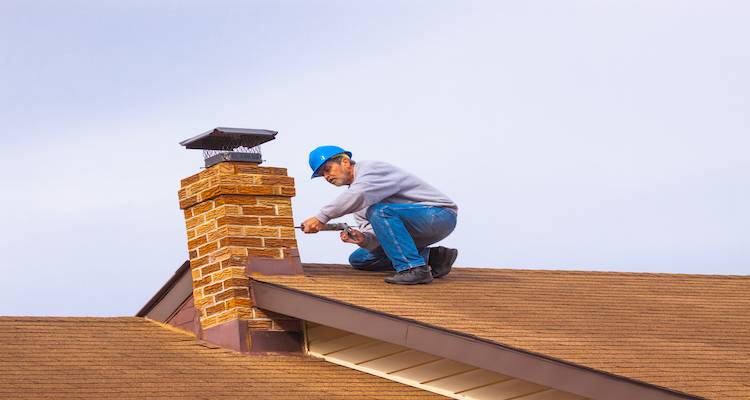
If you can access your roof quite easily and you can also reach the chimney from the rooftop with ease, then it should be fine to undertake this work DIY. However, it’s still important that you have the right skills and knowledge, either way and safety is vital.
Important safety steps include:
- Having someone hold the ladder at the bottom while you are working on the roof.
- Consider wearing a safety harness.
- Take your time and watch your steps.
Hazards and dangers of fitting a chimney cowl DIY include:
- The risk of falling.
- The danger of stepping on a broken- or worn-down roof tile/shingle.
- The possibility of an incorrect or poor installation.
If your roof or/and chimney is not easy to access, it is best to hire a professional, including if scaffolding is needed.
If your roof has a sharp slope or the chimney being particularly high, these would be further examples of poor accessibility making it much more suitable to hire a contractor to install the chimney cowl.
Building Regulations & Planning Permission for a Chimney Cowl Installation
Although there aren't any planning permission requirements that apply specifically to chimney cowls, the installation must still comply with Building Regulations, specifically Approved Document J.
This document covers the safe installation of flues and ventilation, with part J in relation to chimney work associated with combustion appliances. It is therefore important to only hire a fully qualified tradesmen to ensure these safety and performance requirements are met.
Beyond that, if you are having other work undertaken at the same time, contact your local council if you need to check any additional planning permission rules or building regulations that may apply.
If planning permissions approval or building regulations approval is ever needed, you’d be looking to pay around £100 and £200, respectively for each application (depending on the extent of work involved).
In general it can take up to 8 weeks to have a planning permission application approved, although turnaround is often much quicker.
Checklist: Hiring a Tradesperson to Fit a Chimney Cowl
If you intend on hiring a professional to lay a chimney cowl for you, there are various points worth considering in your search.
Here are some points to have on your checklist:
- Qualifications are not necessary but a bonus.
- Figure out their level of experience.
- Ask what previous work they've done.
- Check with friends and family for any recommendations they have.
- Have their previous customers rated highly?
- Are they part of any accreditation? And if so, which one?
FAQs
What is a cowl on a chimney?
What type of chimney cowl do I need for a gas fire?
You should always double check you are purchasing a suitable chimney cowl if buying it yourself. Otherwise, you can ask a professional to source a suitable chimney cowl for you.










